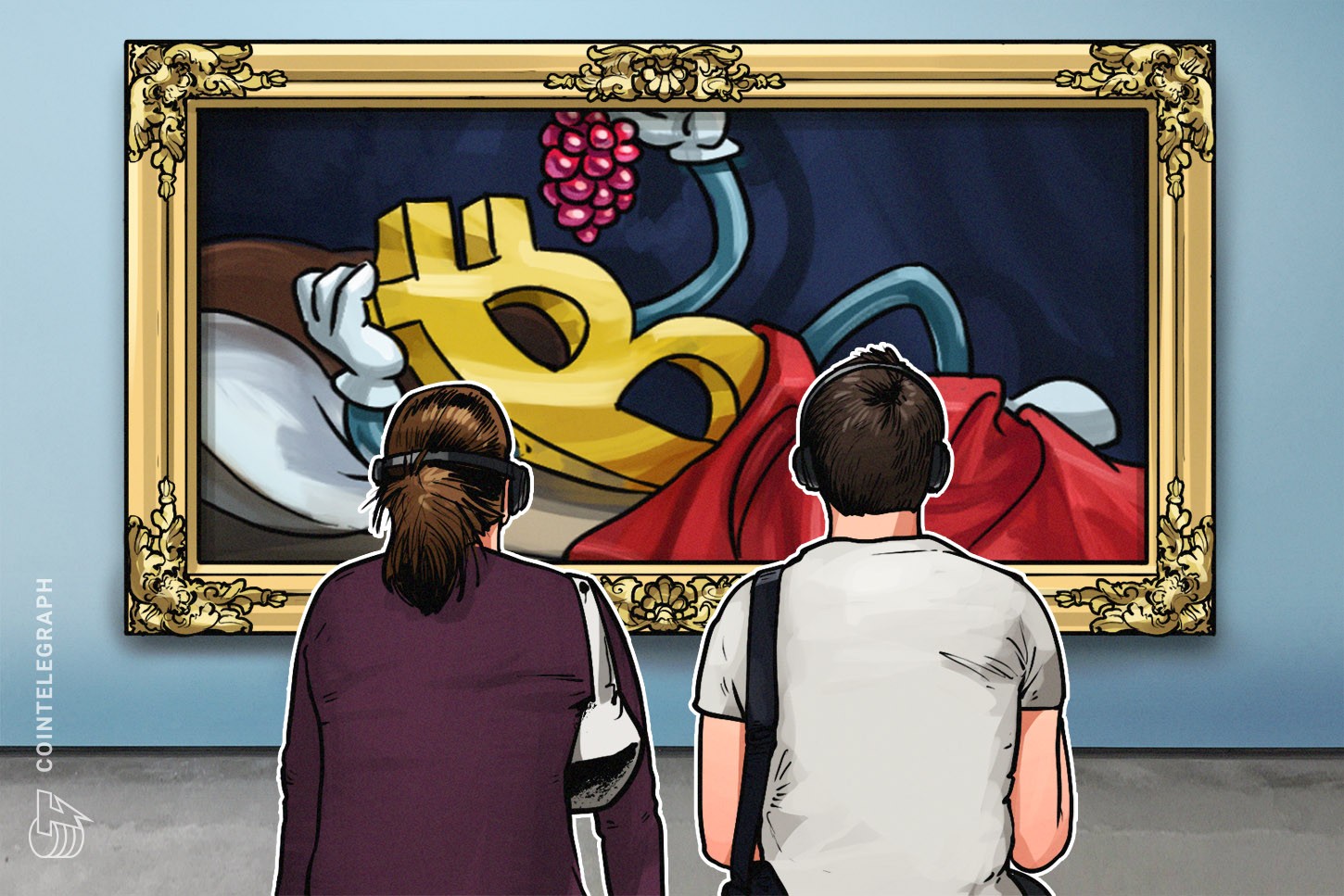Bitcoin artist “Bnoiit.c” has created an Ethereum-based virtual museum “Cryptovoxels” that ensures censored artworks are immutably preserved for an online audience.
In its collection as of Aug. 25 has been a Bitcoin mural by French street artist Pascal “PBOY” Boyart, which was painted over by French authorities earlier this year.
Revolutionary stirrings
Cryptovoxels’ site tells the story of the subversive mural — a modern-day reworking of Eugène Delacroix’s classic revolutionary painting “La Liberté guidant le peuple” (Liberty Guiding the People).
The mural — created in honor of the 10th anniversary of Bitcoin’s Genesis Block — had recast the rebels who rose up against King Charles X in 1830 as contemporary “Gilets Jaunes” (Yellow Vest) protestors.
Conceived as a street art treasure hunt, it contained a puzzle with a 0.284 BTC bounty, which could be solved entirely only by finding — and being physically in front of — the mural.
It was painted over one month after its creation.
The mural has now been tokenized as a digital collectible — split into 100 ETH-based non-fungible tokens, which can be bought and sold via peer-to-peer digital collectibles marketplace OpenSea.
Users wishing to display their fragment of the mural need to buy ETH-based “land parcels” on Cryptovoxels — just as with artwork, these land parcels can also be bought and traded via OpenSea.
Art and the blockchain
In 2018, Cointelegraph reported on the world’s purportedly first cryptocurrency art auction, in which fractional ownership of Andy Warhol’s 14 Small Electric Chairs was sold via the Maecenas blockchain platform.
Similarly to Boyart, artist Andy Bauch has produced puzzle-like crypto artworks containing abstract codes, which provide hints to retrieving the private keys to wallets containing thousands of dollars’ worth of cryptocurrencies.
In the spring of this year, blockchain-based art registry startup Artory raised over $7 million in Series A funding round from an early Spotify investor, among others.


